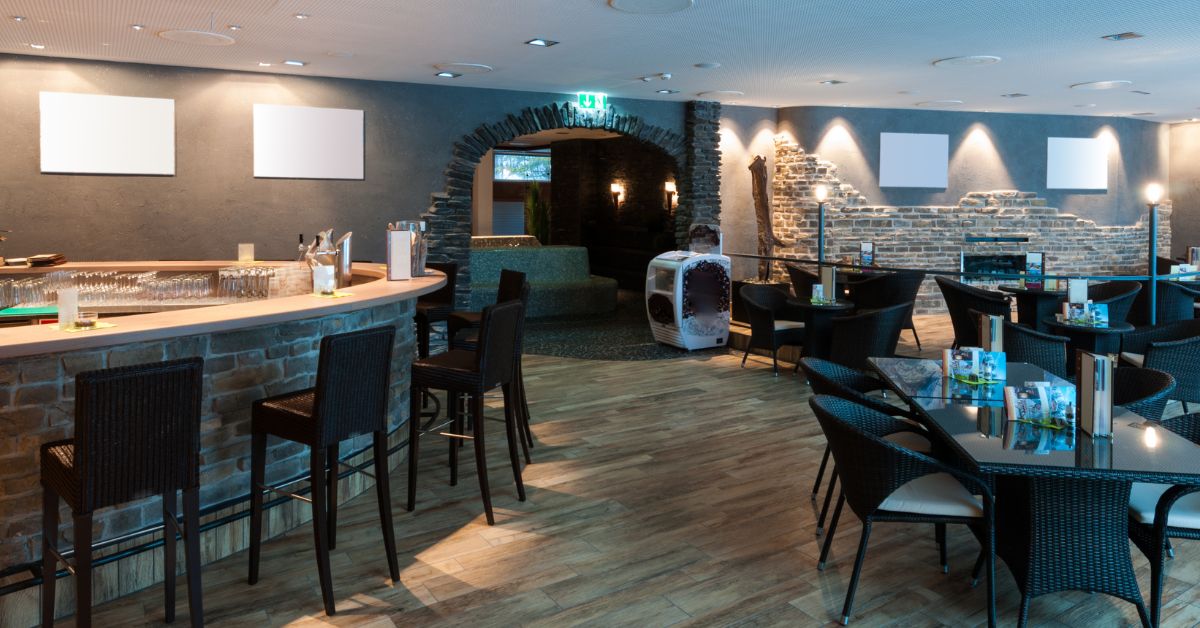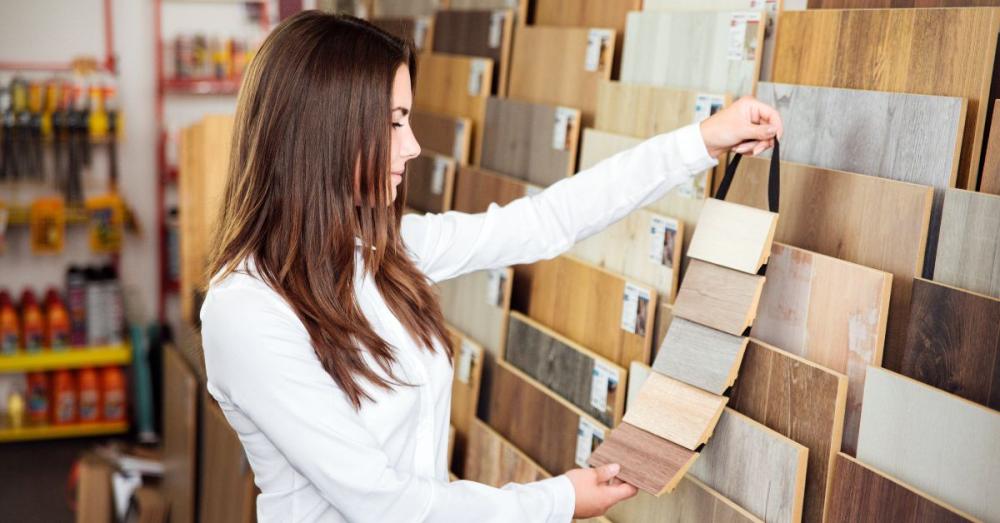How To Choose the Best Flooring for Your Café or Restaurant
Learn how to choose the best flooring for your café or restaurant. Explore practical options, such as hardwood, tile, and more to create the perfect atmosphere!

Learn how to choose the best flooring for your café or restaurant. Explore practical options, such as hardwood, tile, and more to create the perfect atmosphere!
Your café or restaurant’s flooring shapes the atmosphere, handles daily traffic, and supports your business operations. That said, it’s important to make the right flooring choice. But with so many options available, how can you select your perfect fit? Luckily, we’re here to help. Check out this guide on how to choose the best flooring for your café or restaurant!
Assess Your Café or Restaurant’s Needs
The type of café or restaurant you own sets the tone for your flooring decision. For example, a quaint coffee shop could benefit from warm, natural wood flooring. On the other hand, a fast-casual eatery with quick service requires something more utilitarian, such as durable tiles that can withstand heavy foot traffic.
Polished stone or textured tiles create an elegant impression if you manage a fine-dining space and want to match your flooring to your sophisticated brand. Your flooring must reflect and elevate the mood, whether your space is formal, casual, or eclectic.
Adapt to Customer Foot Traffic Patterns
Customer traffic impacts how flooring performs over time. Hallways, entryways, and ordering areas handle frequent movement, so robust materials, which resist wear and tear, make sense for these sections.
Consider whether you deal with rush hours, weekly events, or weekend brunches when foot traffic increases. On the flip side, lighter-use areas, such as corners or seating zones that don’t see much activity, pair well with softer flooring, such as vinyl planks that mimic wood, without succumbing to heavy wear.
Explore Flooring Material Options

Of course, exploring your options will help you choose the best flooring for your café or restaurant. Let’s assess each option’s advantages and disadvantages.
Hardwood Flooring
Hardwood flooring creates a sense of luxury and timelessness in your café or restaurant. Its polished appearance complements classic or upscale interiors. For example, this natural, warm material can benefit from a cozy bistro with an inviting atmosphere.
However, hardwood’s susceptibility to scratches or dents becomes an issue in high-traffic areas or spaces with heavy furniture. You’ll also need to protect it from spills and stains, as moisture can cause warping.
Refinishing hardwood extends its lifespan, but you must consider the upfront material and maintenance costs.
Laminate Flooring
Laminate flooring offers many styles, with designs mimicking wood, stone, or tile. While it is a cost-effective option for achieving a stylish look, its use has significant limitations in commercial environments, such as cafes or restaurants.
Traditional “click together” laminate is particularly vulnerable to spills, as moisture can penetrate the tongue and groove connections, leading to swelling and weakening within months, making it unsuitable for areas with frequent exposure to liquids, such as dining areas, kitchens, or entryways.
Noise is another consideration, as floating laminate floors amplify sound compared to other flooring options. This amplification can create a noisier, less comfortable atmosphere in busy settings. While glue-together laminate provides better resistance to moisture, these products are less common in today’s market.
Exploring alternative flooring solutions is best for businesses seeking durability and practicality in high-traffic, moisture-prone areas.
Tile Flooring
Tile remains a restaurant favorite, providing durability and a range of design options. This material adapts to a variety of aesthetics, from chic porcelain tiles in a modern café to ornate ceramic designs in themed restaurants.
Its water resistance makes it ideal for outdoor patios, bathrooms, or areas near beverage counters. Despite its durability, high impact can crack tiles, resulting in costly replacements. Additionally, its hard surface can feel uncomfortable for staff working long shifts.
Though grout requires consistent cleaning to avoid discoloration, tile flooring rewards you with longevity and a polished look when you maintain it correctly.
Vinyl Flooring
Vinyl combines practicality and style, making it a versatile choice for casual and high-traffic restaurants. Luxury vinyl planks or tiles replicate expensive materials, such as hardwood or stone, without the added fragility.
Vinyl’s moisture resistance and ease of cleaning make it ideal for kitchens, dining rooms, and restrooms. However, lower-quality vinyl can detract from your space’s appearance, so carefully select styles that match your brand.
Rugs and Carpet (Limited Use)
Limited rug or carpet installations work best for spaces focusing on comfort or noise control. However, heavy spills or stains make carpets impractical for high-traffic or food-heavy areas. Frequent cleaning is essential to maintain hygiene, especially when serving food. Avoid carpets in areas with constant foot traffic.
Evaluate Flooring for Temperature Control
Keeping your space cool and comfortable for customers and staff is a priority in Texas’ hot climate. Certain flooring materials excel at this. For example, tile flooring has natural cooling properties, suiting areas in direct sunlight or experiencing high temperatures.
On the flip side, wood or vinyl materials can come into play when temperatures dip during Texas’ mild winters. These materials retain warmth and create a cozier feel. Vinyl offers excellent versatility, as it mimics the look of natural wood while providing better resistance to Texas’ humidity fluctuations.
Overall, choosing flooring that complements Texas’ fluctuating climate ensures a better dining experience for your guests and a more efficient environment for your operations.
Test Before Finalizing Your Choice
Samples allow you to see flooring materials in action within your business environment. Select your top options and compare how they look under your lighting and how they resonate with your color scheme.
Furthermore, perform practical tests to evaluate how flooring handles spills, stains, and scratches—for example, test flooring with common spills, such as coffee, wine, or grease. Ensure your cleaning methods don’t strip protective coatings or cause discoloration.
Note that tile grout or untreated wood floors might trap food particles if you overlook them, so assess how they respond to quick wipe-downs or intense scrubbing.
Consider Sound and Noise Absorption
Your flooring affects how sound travels in open dining spaces. Hard surfaces magnify noise levels, which may suit lively atmospheres but strain quieter cafes. Softer materials create a more relaxing ambiance. Smaller additions, such as padded mats under tables or rugs in corners, might balance acoustics if unwanted echoes persist after testing.

Get Flooring for Cafés, Restaurants, and Beyond
iDeal Floors know the right flooring can elevate your café, restaurant, or any commercial space. That’s why we offer an extensive selection of high-quality options. We have something for every business, from durable tile that handles spills and heavy traffic to waterproof vinyl perfect for busy kitchens.
Explore our laminate flooring for sale in Dallas and Fort Worth for a stylish yet budget-friendly solution. You can count on the best materials and great prices at iDeal Floors. Visit us in Garland, Arlington, or Duncanville, or check out our selection online to see how we can help your business thrive.


Comments